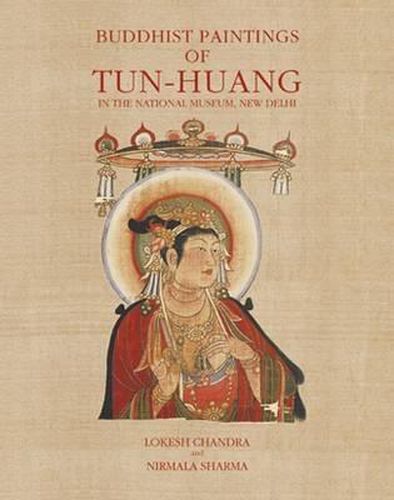Readings Newsletter
Become a Readings Member to make your shopping experience even easier.
Sign in or sign up for free!
You’re not far away from qualifying for FREE standard shipping within Australia
You’ve qualified for FREE standard shipping within Australia
The cart is loading…






The Tun-huang caves are the jewel of Buddhist art over the centuries. Situated at the foot of the Mountain of Singing Sands, they are the brush of the Buddha, where an itinerant monk Yueh-ts'un watched the iridescent peaks in the sheen of blue satin, settled down to excavate the first cave in AD 344, and to paint its walls with colours brought by birds as the folk legend has it. Speechless with joy, he had begun a long journey of a thousand years of Buddhist meditation in the dazzling ecstasies of murals, scrolls and sculptures. This book reproduces and describes for the first time the paintings from Tun-huang in the National Museum, New Delhi. The 143 best scrolls have been narrated whose colours are still radiant images of the divine. The National Museum is one of the three major repositories of the Tun-huang paintings, the others being the British Museum London and the Musee Guimet, Paris. While the two latter collections have been published, this book fulfils a long-felt need and will cover a major lacuna of research in presenting the third large repository. The introduction traces the history of Tun-huang from the dreams of Chinese emperors to control the Deep Sands, the role of Yueh-chihs, the excavation of the first cave, the folk legends, the iconography of the paintings, the three periods of the art of murals from AD397-1368, etc. The scrolls from Tun-huang are the charm of these caverns that once drew humans to their depths.
$9.00 standard shipping within Australia
FREE standard shipping within Australia for orders over $100.00
Express & International shipping calculated at checkout
The Tun-huang caves are the jewel of Buddhist art over the centuries. Situated at the foot of the Mountain of Singing Sands, they are the brush of the Buddha, where an itinerant monk Yueh-ts'un watched the iridescent peaks in the sheen of blue satin, settled down to excavate the first cave in AD 344, and to paint its walls with colours brought by birds as the folk legend has it. Speechless with joy, he had begun a long journey of a thousand years of Buddhist meditation in the dazzling ecstasies of murals, scrolls and sculptures. This book reproduces and describes for the first time the paintings from Tun-huang in the National Museum, New Delhi. The 143 best scrolls have been narrated whose colours are still radiant images of the divine. The National Museum is one of the three major repositories of the Tun-huang paintings, the others being the British Museum London and the Musee Guimet, Paris. While the two latter collections have been published, this book fulfils a long-felt need and will cover a major lacuna of research in presenting the third large repository. The introduction traces the history of Tun-huang from the dreams of Chinese emperors to control the Deep Sands, the role of Yueh-chihs, the excavation of the first cave, the folk legends, the iconography of the paintings, the three periods of the art of murals from AD397-1368, etc. The scrolls from Tun-huang are the charm of these caverns that once drew humans to their depths.